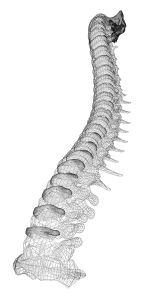Cage Implants in Spine Surgery
Category: Minimally Invasive Surgery, Procedures | Author: Stefano Sinicropi
 There are many pieces of hardware that spine surgeons can use for various procedures. One such piece of hardware that we have not yet discussed on this site is an interbody cage implant. In this article, we are going to explain what cage implants are, how they work, and when they are most effective for treating spine conditions.
There are many pieces of hardware that spine surgeons can use for various procedures. One such piece of hardware that we have not yet discussed on this site is an interbody cage implant. In this article, we are going to explain what cage implants are, how they work, and when they are most effective for treating spine conditions.
What is a Cage Implant?
A cage implant is a piece of hardware used in certain spine surgeries. They were approved by the FDA in 1996, and have been used in minimally invasive surgeries ever since. These implants are porous and usually made of very strong plastic or titanium. In fusion surgeries, cages are placed in the disc space between vertebrae. They are called cages because there are holes that pass through the implant. These holes are tightly packed with bone graft. The implant supports this graft while it heals into a new piece of bone after surgery. Cage implants also provide structural support to the spine while the bone graft forms, and also decrease the amount of harvested or donor bone required for a fusion.
Cage implants have a very low risk of complications as well. They are incredibly strong – stronger than the spinal vertebrae themselves, so risk of breaking is nearly nonexistent. There is a slight risk of displacement, but again – this is very minimal.
When are Cage Implants Effective?
Cage implants are most helpful in specific surgeries (and not as useful in others). They work best for treating single level collapsed discs in the low back. In other procedures (such as multi-level fusions, or fusions in the upper back) the cages alone do not provide sufficient support. These procedures may require the use of additional fixation hardware such as plates and screws.
Spinal cage implants are not the most effective in every situation. They are merely one of many tools in a spine surgeon’s arsenal. A good spine surgeon will consider each patient’s situation individually and determine the best course of action for treatment.